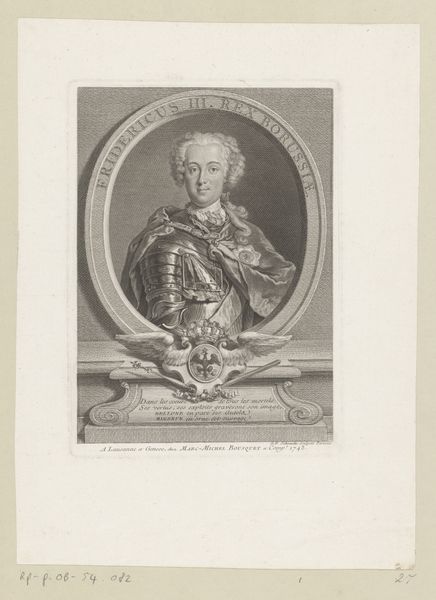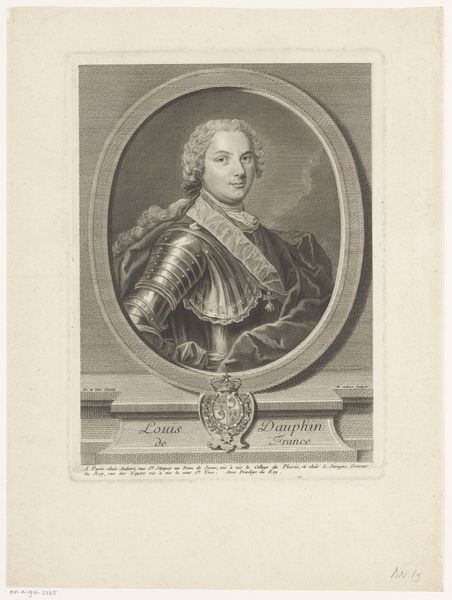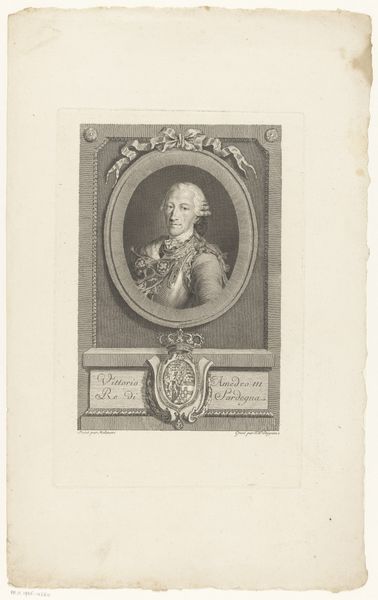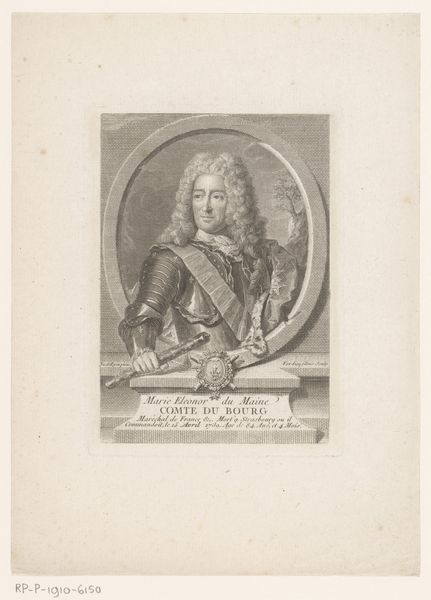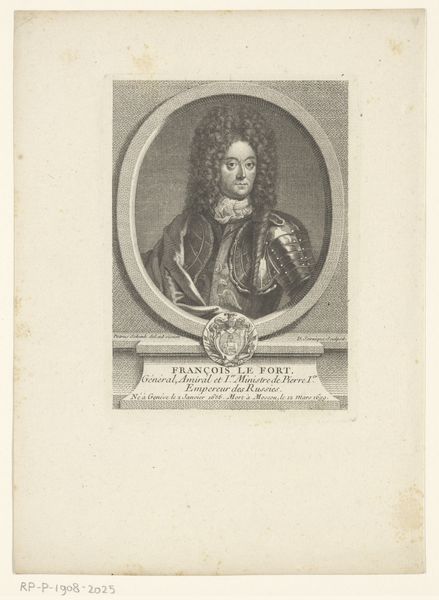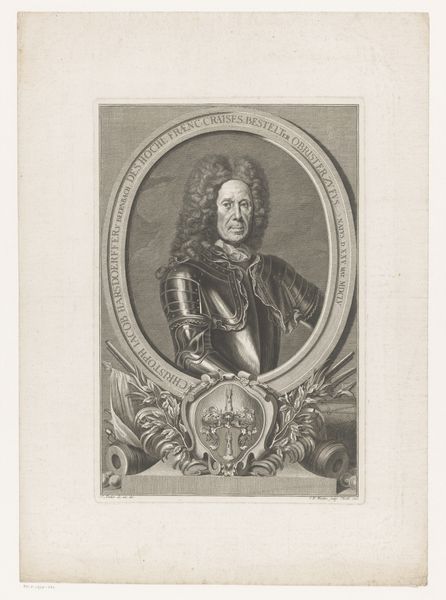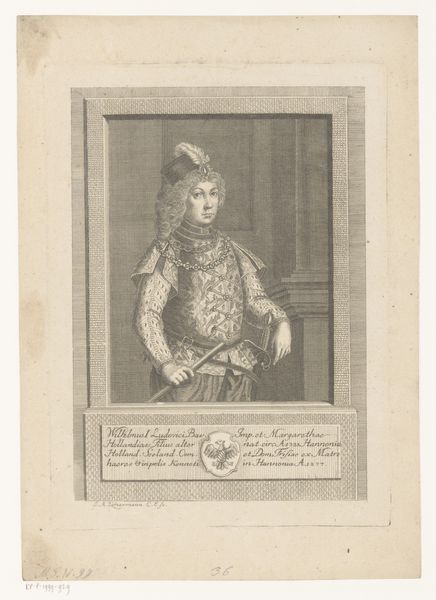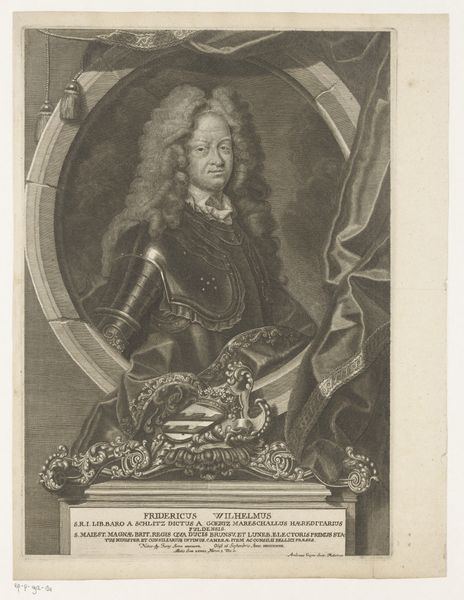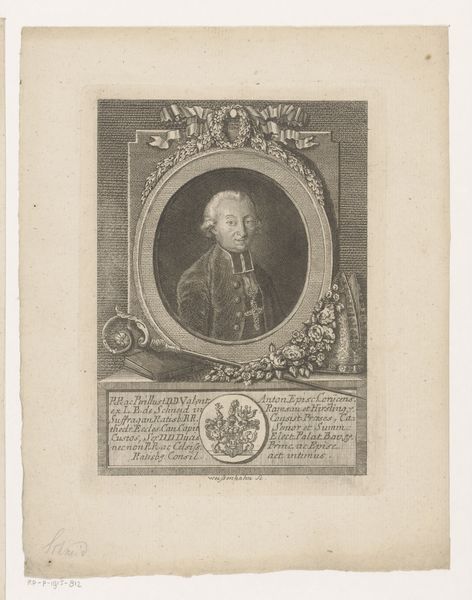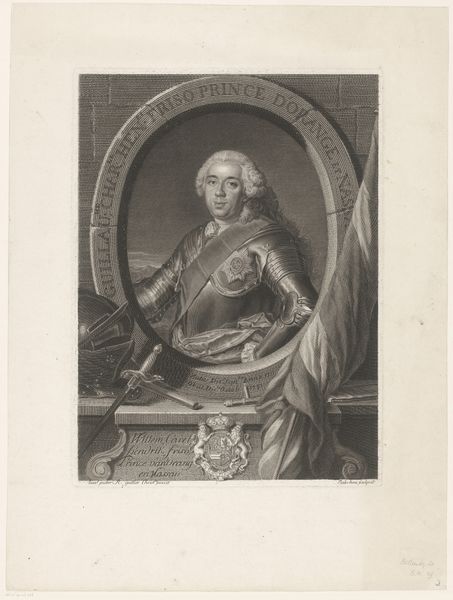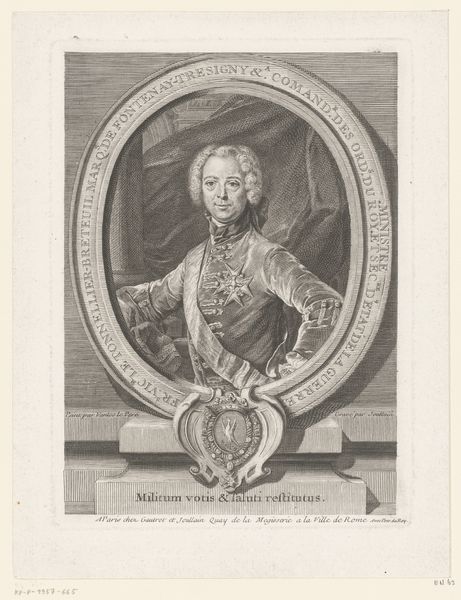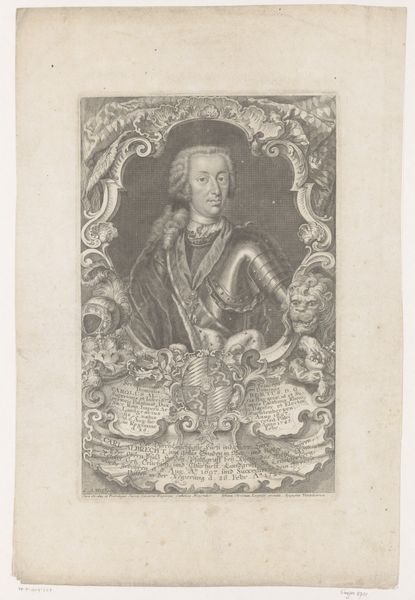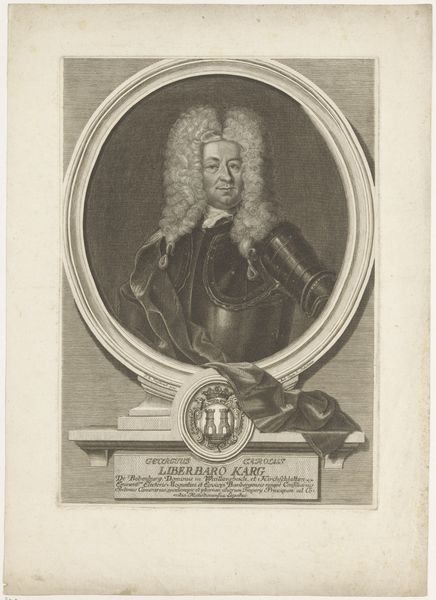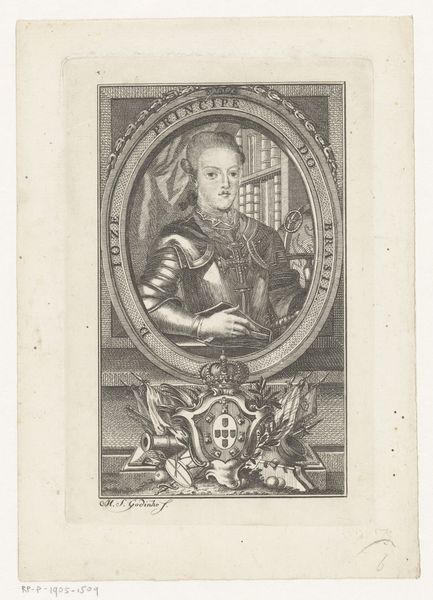
print, engraving
#
portrait
#
baroque
# print
#
history-painting
#
engraving
Dimensions: height 332 mm, width mm
Copyright: Rijks Museum: Open Domain
Andreas Geyer’s portrait of Rudolph Johann von Wrisberg was made with engraving, a printmaking technique dating back centuries. The lines you see were incised directly into a metal plate – likely copper – with a tool called a burin. The incised lines hold ink, which is then transferred to the paper under great pressure in a printing press. It’s an indirect process, requiring patience and skill. The engraver’s art lies in modulating line thickness and density to create tone and form. Look closely and you’ll see the lines bunching together to define the shadows of Wrisberg’s armor and the luxurious drape behind him. The profusion of detail – from the sitter’s elaborate wig to his family crest – speaks to the engraver’s technical virtuosity, and to the status of the person portrayed. So next time you look at a print, remember the complex, laborious process that brought it into being. It reminds us that even seemingly simple images have a rich history embedded in their making.
Comments
No comments
Be the first to comment and join the conversation on the ultimate creative platform.
